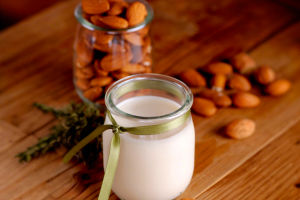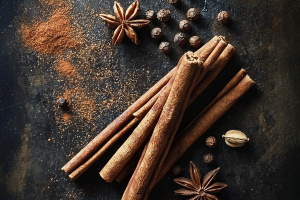
For coffee enthusiasts, that first cup of coffee is something to look forward to, whether it’s in the morning, evening, or anytime in between.
Crafting the perfect espresso is almost an art form, with several factors playing into how enjoyable each shot is.
Common Mistakes in Latte Art
- Pouring too slowly: This results in separated milk in the pitcher—under-aerated milk pours into the cup, while more aerated milk stays behind. This makes creating latte art difficult and gives the drink a less-than-ideal texture.
- Lifting the pitcher too high: Lifting the pitcher away from the surface causes the milk to dive into the crema instead of resting on top, ruining the art.
- Keeping the pitcher spout too close to the surface: This can cause the milk to skim the surface and fail to form a design.
How to Make Latte Art?: A Step-by-Step Guide
Phase 1: Making the Perfect Foam
1. Pour Cold Milk
Start by pouring enough cold milk (1°C or 34°F) into your steam pitcher for one cup. For the best results:
- Chill your pitcher in the fridge or freezer for 30 minutes to prevent scalding and to help the milk foam more easily.
- Use a liquid thermometer to monitor the temperature and avoid scalding. The milk should be heated just below boiling.
2. Turn on the Steam
Place the steam wand at the bottom of the pitcher, turn on the steam, and slowly raise the wand until it is close to the milk’s surface. As the milk rises, adjust the pitcher so the steam wand stays about 1 cm from the tip of the milk. Avoid over-stretching or forming large bubbles, as the goal is to create smooth, velvety milk.
3. Spin the Milk
Once the milk reaches 37°C (100°F), position the steam wand deep into the milk near the side of the pitcher so the milk spins counterclockwise. Continue this motion as the milk heats to between 65°C and 68°C (150°F and 155°F). Don't let it reach 71°C (160°F), as it will scald.
4. Shut off the Steam
Turn off the steam wand and remove it from the milk. Clean the wand immediately with a damp cloth.
5. Swirl, Swirl, Swirl
Let the milk rest briefly to reach a velvety texture, then swirl it vigorously. If any bubbles remain, tap the pitcher on the counter a few times and continue swirling for 20–30 seconds to achieve the perfect micro-foam.
Phase 2: Pulling the Espresso
Start pulling your espresso shots as soon as you finish frothing your milk. For each shot, use between 7 and 8 grams of ground espresso. Apply 30–40 lbs of pressure when tamping the coffee grounds into the portafilter. To gauge this pressure, you can practice on a bathroom scale to get an idea of the right force before tamping. For most adults, this is roughly the amount of pressure you'd use when pressing down on one hand.
Phase 3: Pouring Milk and Creating Latte Art
When it’s time to pour your steamed milk into the espresso, focus on the height, position, and flow of your pour. Here are a few tips for a smooth pour:
- Start High, Then Lower: Begin pouring from a high position until the cup is nearly half full. Then, lower the pour so it’s close to the crema to help the foam appear.
- Pour with Steady Speed: Maintain a steady pour, adjusting the height as needed. Pouring too quickly will break apart the crema, while pouring too slowly will leave the foam behind.
- Angle the Cup: Hold the cup at a slight angle as you pour. Move the pitcher from side to side using gentle wrist movements.
Creating a Rosetta (Leaf Pattern)
1. Pour the milk from side to side to create foam on the surface.
2. As the foam forms, move the pitcher gently from side to side, slowly starting to move the jug backwards.
3. When you reach the end of the cup, quickly move the jug in a straight line through the pattern.
4. Fast side-to-side movements create a rosetta with many small leaves, while slow movements result in thicker, fewer leaves.
Creating a Heart Pattern
1. Begin pouring from side to side, focusing on one spot in the middle of the cup.
2. As you continue, a large circle of crema should start to form.
3. Move the pitcher slightly forward and keep pouring into the foam until the cup is almost full.
4. Finish by pouring a quick straight line through the center of the foam to complete the heart.
Creating a Flower Pattern
1. Pour the milk 2-3 cm (1 inch) above the bottom of the cup.
2. As the cup fills halfway, gently shake the pitcher back and forth while slowly moving backward.
3. This motion will cause the flower pattern to move forward and fill the cup.
4. To get the best results, use your wrist to shake the pitcher rather than your whole hand.
Creating perfect latte art requires attention to detail and a bit of practice, but with the right techniques, you can easily master it!
Latte Art For Beginners: How To Pour Heart (Latte Art Tutorial) 🖤
Video by European Coffee Trip


